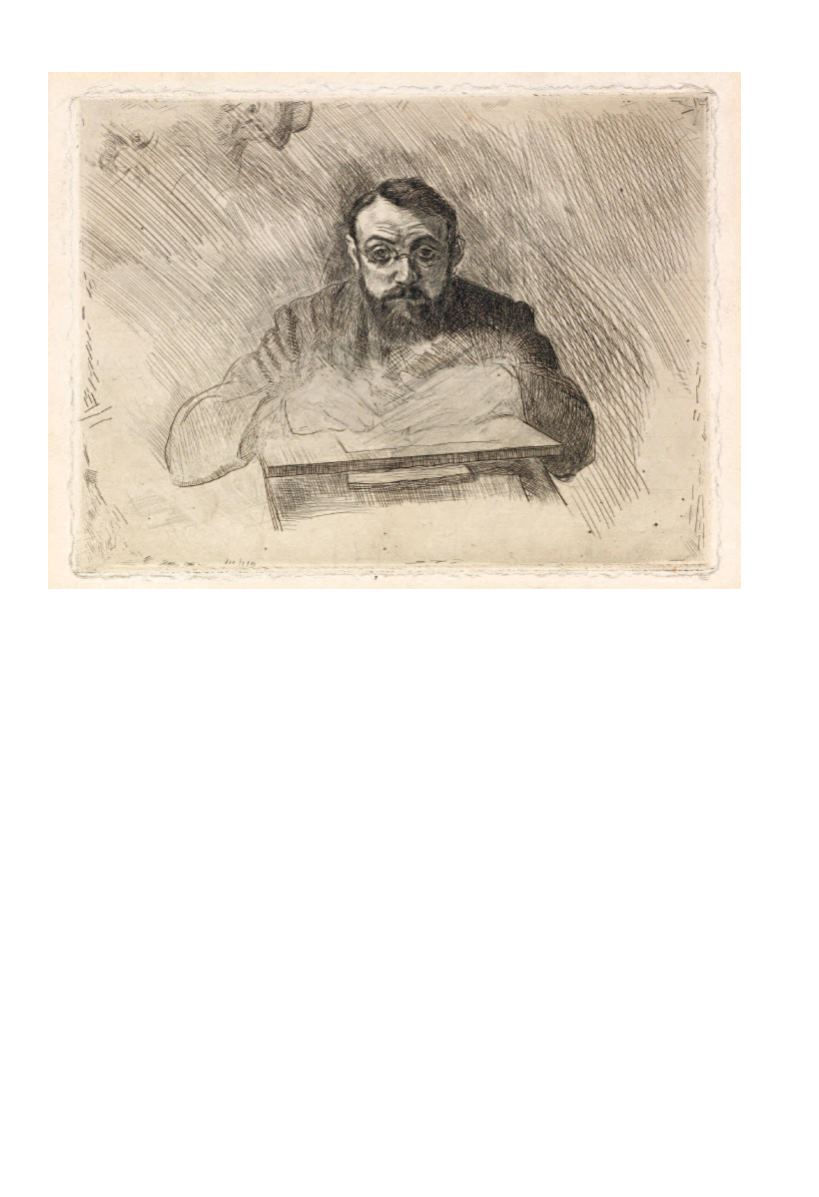

389
●
HENRI MATISSE
Henri Matisse gravant
.
Drypoint printed in black on cream wove paper, 1900-03. 150x200 mm; 6x7
7
/
8
inches, full
margins. Fourth state (of 4). An artist’s proof in this state, before the completion of the
subject, lower left. A superb impression of this extremely scarce, early self portrait, showing
the artist working on a copper etching plate.
Born in the north of France to a family of weavers and grain merchants, Matisse grew up
in a rustic, pre-industrial town before eventually going away for school and to Paris to
study law. In 1889, after passing the bar exam and becoming a legal clerk (which he found
exceedingly tedious), he was struck with appendicitis and it was only then, when his
mother brought him art supplies during his convalescence, that he began to paint.
Matisse himself was not looking to be a revolutionary artist and found the constant
criticism of his work in his early career to be disheartening. He met strong criticism when
his work debuted in Paris at the Salon d’Automne in 1905. It was in this exhibition that
Matisse and fellow artists gained the moniker Fauves (which means “wild beasts”) because
of their perceived disregard for realistic use of color and form. While he exhibited with
other Fauves like Derain (see lot 401),Vlaminck, and Kees van Dongen (see lot 408), it
was Matisse who met with the most criticism for his painting
Woman with a Hat
, 1905.
In this early work by Matisse, the influence of bright Pointillist colors and Paul Cezanne’s
painterly impasto came together, and Matisse created one of the pillars of modern painting.
This drypoint is Matisse’s first intaglio print and his earliest printed self portrait. It is an
introspective, quiet and subdued portrait, created around the same time as some of his
brashest, most colorful Fauve paintings. Duthuit 1.
[15,000/20,000]









